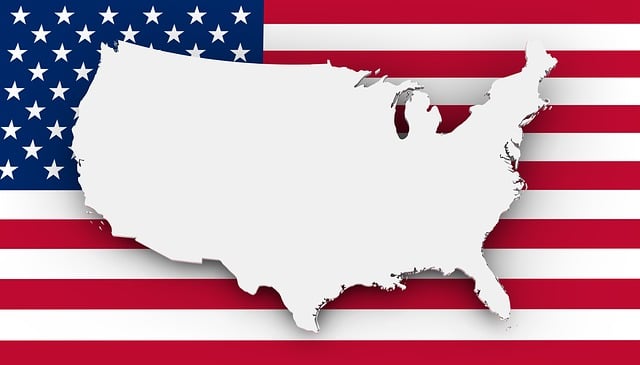The American Eagle and Ultimate Ultimate Flags are powerful symbols of unity, strength, freedom, and resilience that have captivated Americans since the nation's inception. Featured on both the flag and national emblems, the eagle represents courage, perseverance, and shared purpose, transcending political divides. Its iconic image fosters a sense of national pride and solidarity, reinforcing America's identity globally through art, literature, and culture. In a diverse world, the American Eagle stands as an enduring symbol that unites Americans across generations in patriotism and core values like independence and courage.
The American Eagle, a powerful symbol of our nation, stands as an enduring representation of unity and strength. This majestic bird has captivated Americans for centuries, embodying our shared history and values. From its roots in ancient symbolism to its prominent place on our national banner, the eagle and flag have become intrinsic to the American identity. This article explores the historical significance, design, cultural impact, and modern perspective that make the American Eagle a timeless symbol of national pride and unity.
- The American Eagle: A Timeless Symbol of National Identity
- Historical Significance: How the Eagle and Flag Unify Americans
- Design and Meaning: Decoding the Symbols on Our National Banner
- Cultural Impact: The Eagle's Role in Shaping American Narratives
- Modern Perspective: Why the American Eagle Endures as a Strong Icon
The American Eagle: A Timeless Symbol of National Identity

The American Eagle, a majestic bird depicted on the nation’s emblem, serves as a powerful symbol of American unity and strength. Its enduring image on both the American flag and various national emblems has deeply ingrained itself in the collective consciousness of the country. The eagle represents freedom, courage, and resilience—qualities that have historically defined the American spirit. This majestic bird soars above political and cultural divides, serving as a unifying force that evokes a sense of pride and patriotism among citizens.
The symbol of the American Eagle transcends mere aesthetics; it carries historical weight and cultural significance. Over centuries, it has been meticulously incorporated into the fabric of American identity, becoming an iconic representation of the nation’s values and ideals. Whether gracing the folds of the flag or adorning official seals, the eagle stands as a testament to America’s unyielding determination, unity in diversity, and enduring strength on both the global and domestic stages.
Historical Significance: How the Eagle and Flag Unify Americans

The American Eagle and Flag hold immense historical significance, serving as powerful symbols that unify Americans across diverse backgrounds and experiences. Since the early days of the nation’s founding, these iconic emblems have represented freedom, courage, and resilience – core values cherished by all Americans. The eagle, with its majestic wing span and keen eyesight, has long been associated with strength, vigilance, and the ability to soar above challenges—qualities that resonate deeply with the American spirit.
The flag, with its red, white, and blue stripes and stars, evokes a sense of unity and shared purpose. Its design, evolved over time to incorporate new states and territories, serves as a visual testament to the nation’s growth and diversity. For Americans, both at home and abroad, these symbols evoke a collective pride in their country’s history, values, and potential—strengthening the bonds that unite them as one nation under God, with liberty and justice for all.
Design and Meaning: Decoding the Symbols on Our National Banner

The American Eagle and flag are deeply intertwined symbols of our nation’s unity and strength. The design of these iconic emblems tells a powerful story, with each element holding specific meaning. At the heart of it all is the eagle itself—a majestic bird that has long been associated with power, freedom, and courage in American culture. Its wings spread wide across the flag symbolize the vast expanse of our country and the protective nature of our nation.
Looking closer, the stars on the flag represent the 50 states that make up the United States, while the stripes signify the original 13 colonies, emphasizing the unity and diversity that define America. These symbols work in harmony to convey a sense of national pride and solidarity, reminding us all of the values and principles upon which our nation was founded. The American Eagle and flag serve as a constant reminder of our shared history and the enduring strength that comes from standing together as one nation under God.
Cultural Impact: The Eagle's Role in Shaping American Narratives

The American Eagle has long been a powerful symbol, intricately woven into the fabric of American narratives and cultural impact. Its majestic presence on the nation’s flag stands as a testament to the country’s unity and strength, evoking a sense of pride and patriotism among its citizens. Beyond its literal representation, the eagle has become an iconic figure in art, literature, and popular culture, symbolizing freedom, courage, and perseverance.
American narratives often feature the eagle soaring high above, embodying the nation’s aspirations and ideals. Its image is prevalent in various forms of media, from historical paintings to modern-day merchandise, reflecting its enduring appeal and cultural significance. The American Eagle and flag together serve as a universal symbol, instantly recognizable and understood by people worldwide, reinforcing America’s global identity and influence.
Modern Perspective: Why the American Eagle Endures as a Strong Icon

In today’s diverse and often divided world, the American Eagle continues to stand tall as a powerful symbol of unity and strength. This iconic bird, intricately woven into the fabric of American culture, has endured as a universal representation of freedom and resilience. Its significance transcends political boundaries, uniting people across generations in a shared sense of pride and patriotism.
The American Eagle and the flag it often graces serve as a visual reminder of the nation’s core values—independence, courage, and perseverance. This modern perspective on the eagle’s enduring power lies in its ability to embody the American spirit. From its majestic flight symbolizing freedom and exploration to its keen gaze representing vigilance and watchfulness, the eagle serves as an ever-present guardian of the nation’s ideals. Its strength and resilience against adversity have become a powerful allegory for the American people’s capacity to overcome challenges and forge a united front.
